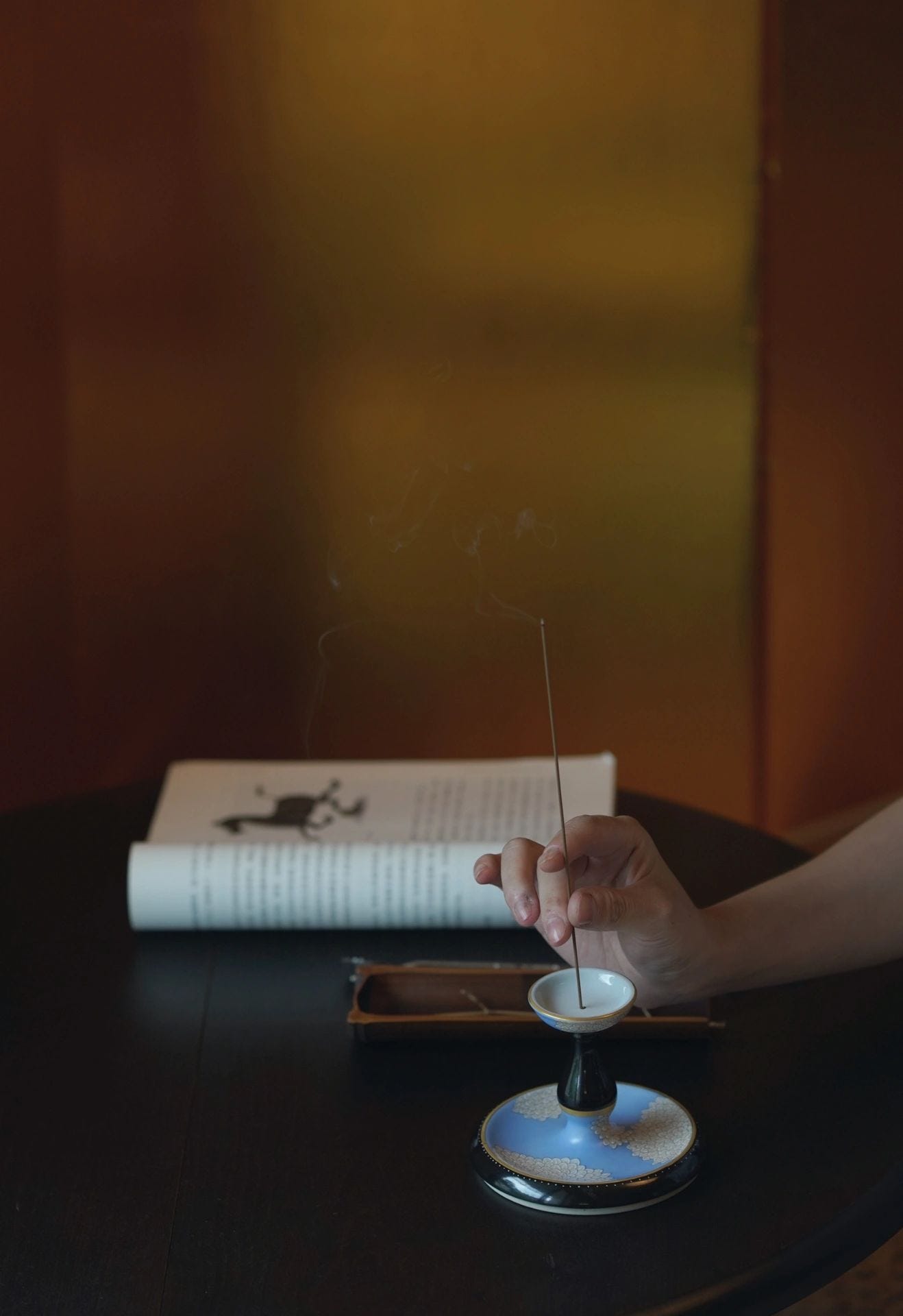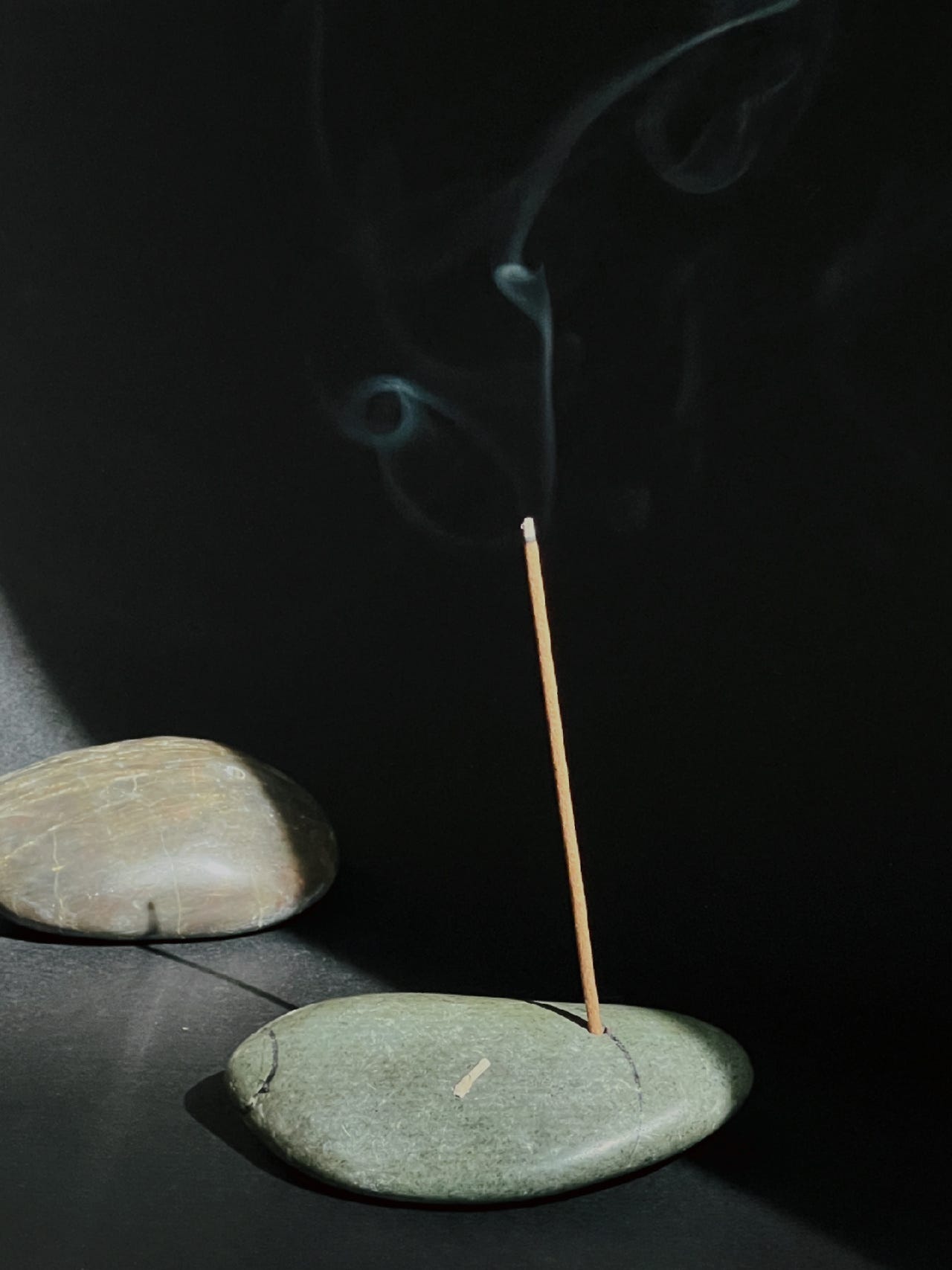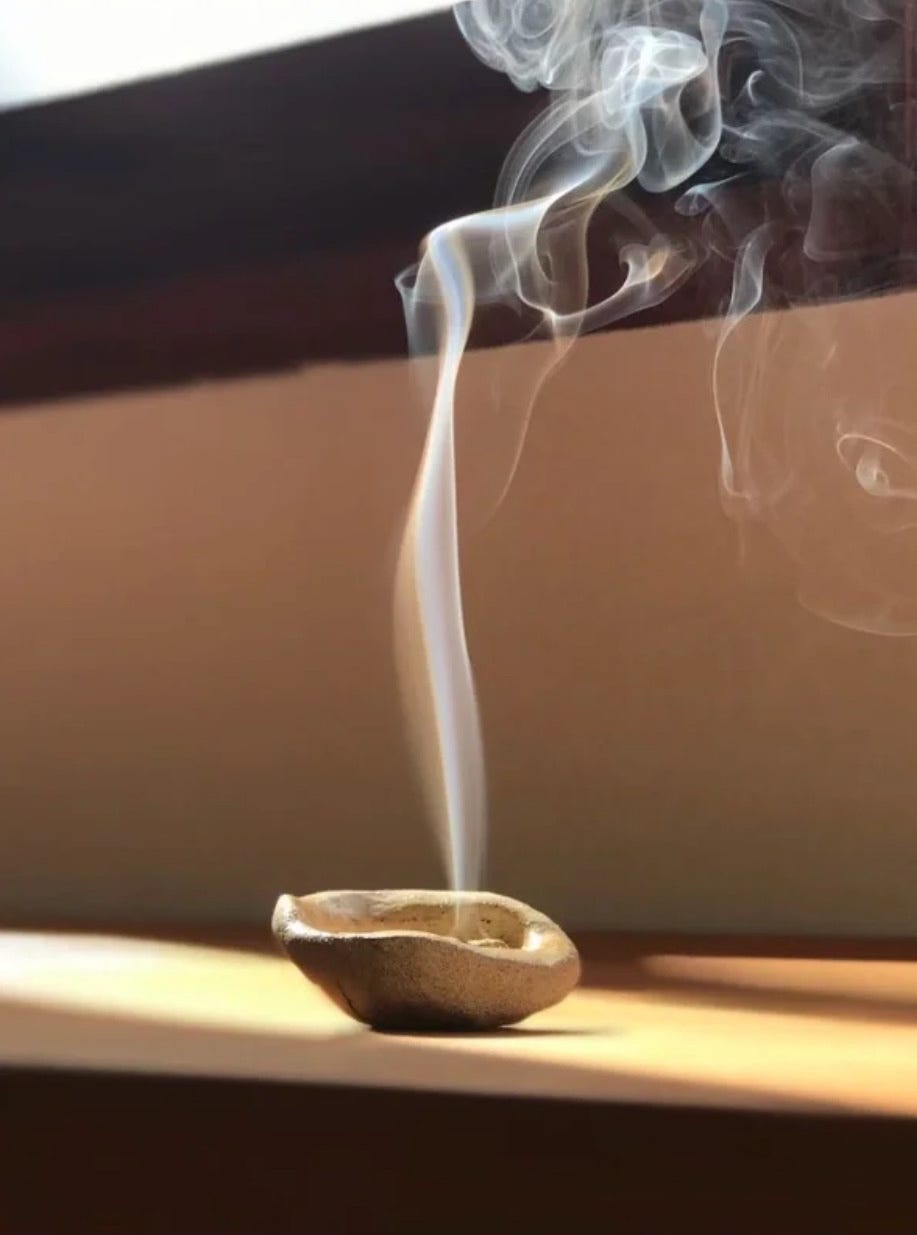INCENZO'S Incense Story: The Consolations of Incense
Share
Incense in Ancient China
In Ancient China, time was measured in spirals of smoke, from incense burning through the night. So time had a scent, of warm, sweet sandalwood, cooling camphor, cypress with its evergreen kiss — and under it all, a char on the air, a memory of something set on fire.
A clock could be as simple as a fistful of joss sticks, although more complex versions were engineered over the centuries: trails of fragrant powder smoldering in circular mazes, following a twisting path from noon to noon; incense sticks placed under strings tied with tiny weights that fell and clanged against a metal plate at intervals as the strings burned through.

Incense in Other Ancient Cultures
Scent is a paradox, sensual yet intangible, a physical presence without a physical form. It can be intimate and half-hidden, a discreet daub at the wrists, a faint pulse when a stranger walks by. But in the beginning, it was fire — the word “perfume” can be traced back to the Latin per fumare, “through smoke” — and a summons to the gods.
Five millenniums ago, the Mesopotamians lit incense at altars as a temple offering, coaxing fragrance out of the sap and shavings of cedar, juniper and cypress.
In the golden age of Greece, in the fifth and fourth centuries B.C., such “sacrificial aromas” were considered kin, in their disembodiment, “to the divinities they were intended to attract,” writes the British classicist Ashley Clements in his 2014 essay “Divine Scents and Presence.”

Early Christians spurned incense as pagan excess, but in the fourth century A.D., when the once persecuted believers earned legal recognition and could profess their faith openly, scented smoke started to infiltrate churches, musky clouds of frankincense stirred up by the swinging of a censer down the aisles, like a pendulum.
None of this was metaphor. Incense was a practical tool, weapon and medicine at once, wielded to banish foul smells and with them disease and evil spirits, from pre-Columbian Mesoamerica to medieval Europe to the Himalayas.
According to a Sanskrit text that may have been written as early as the first century B.C., the dharma, or the nature of reality, could be taught without sound or language, through perfume, whose nebulousness required supernal focus — the kind necessary to comprehend the universe.

In 15th-century Japan, this idea of fragrance as a cerebral trigger was formalized in the ceremony of koh-do as “listening to incense” (mon-koh), in which rare wood was laid on a burner over charcoal and practitioners bowed their heads to take in the scent, trying to call it by name.
Incense Offers a Kind of Escape
There are fewer scents in our lives now, and fewer opportunities to learn them. In increasingly crowded cities, we demanded sanitized spaces, offices that banned perfume, free of any troubling aroma that might betray our proximity to others, how closely we’re all packed in. We chose to live in a cleaner, emptier world.
Yet sales of incense rose during the Covid-19 pandemic, even as — or perhaps because — a number of us temporarily lost our sense of smell to the virus (with some having yet to regain it), making it abruptly precious. The desire to perfume the air we breathe might seem like a return to superstition, hoping to keep death at bay; but for those in quarantine, confined at home, incense offered a kind of escape, opening up increasingly claustrophobic spaces and rendering them, if only for a moment, beautifully unfamiliar.
